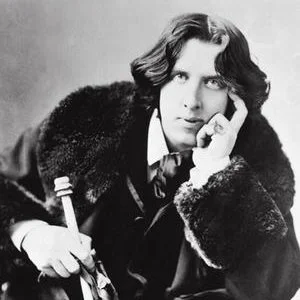The Picture of Dorian Gray
The Picture of Dorian Gray
Oscar Wilde

1891

This e-book was created for MobileRead (www.mobileread.com).
The text is based on the Project BookishMall.com [PG] version of
“The Picture of Dorian Gray” (EText-No. 174). This corresponds to the
revised version published in 1891, after the original publication in a magazine
in 1890. Different editions available at Google Books were used to check formatting
and possible errors. This e-book does not reproduce any particular
printed edition, but has gone through its own editing process.
Contents
Contents
Cover
Title Page
Contents
The Preface
Chapter 1
Chapter 2
Chapter 3
Chapter 4
Chapter 5
Chapter 6
Chapter 7
Chapter 8
Chapter 9
Chapter 10
Chapter 11
Chapter 12
Chapter 13
Chapter 14
Chapter 15
Chapter 16
Chapter 17
Chapter 18
Chapter 19
Chapter 20
The Preface
The Preface
The artist is the creator of beautiful things. To reveal art and
conceal the artist is art’s aim. The critic is he who can translate into
another manner or a new material his impression of beautiful things.
The highest as the lowest form of criticism is a mode of autobiography.
Those who find ugly meanings in beautiful things are corrupt without being
charming. This is a fault.
Those who find beautiful meanings in beautiful things are the cultivated.
For these there is hope. They are the elect to whom beautiful things mean only
beauty.
There is no such thing as a moral or an immoral book. Books are well
written, or badly written. That is all.
The nineteenth century dislike of realism is the rage of Caliban seeing his
own face in a glass.
The nineteenth century dislike of romanticism is the rage of Caliban not
seeing his own face in a glass. The moral life of man forms part of the
subject-matter of the artist, but the morality of art consists in the perfect
use of an imperfect medium. No artist desires to prove anything. Even things
that are true can be proved. No artist has ethical sympathies. An ethical
sympathy in an artist is an unpardonable mannerism of style. No artist is ever
morbid. The artist can express everything. Thought and language are to the
artist instruments of an art. Vice and virtue are to the artist materials for
an art. From the point of view of form, the type of all the arts is the art of
the musician. From the point of view of feeling, the actor’s craft is the
type. All art is at once surface and symbol. Those who go beneath the surface
do so at their peril. Those who read the symbol do so at their peril. It is the
spectator, and not life, that art really mirrors. Diversity of opinion about a
work of art shows that the work is new, complex, and vital. When critics
disagree, the artist is in accord with himself. We can forgive a man for making
a useful thing as long as he does not admire it. The only excuse for making a
useless thing is that one admires it intensely.
All art is quite useless.
Oscar Wilde
Chapter 1
Chapter 1
The studio was filled with the rich odour of roses, and when the
light summer wind stirred amidst the trees of the garden, there came through
the open door the heavy scent of the lilac, or the more delicate perfume of the
pink-flowering thorn.
From the corner of the divan of Persian saddle-bags on which he was lying,
smoking, as was his custom, innumerable cigarettes, Lord Henry Wotton could
just catch the gleam of the honey-sweet and honey-coloured blossoms of a
laburnum, whose tremulous branches seemed hardly able to bear the burden of a
beauty so flamelike as theirs; and now and then the fantastic shadows of birds
in flight flitted across the long tussore-silk curtains that were stretched in
front of the huge window, producing a kind of momentary Japanese effect, and
making him think of those pallid, jade-faced painters of Tokyo who, through the
medium of an art that is necessarily immobile, seek to convey the sense of
swiftness and motion.
1 comment